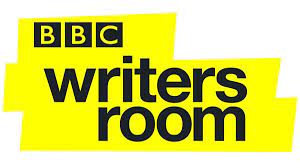Hi There
I’m running a Script Lab at the London Screenwriters Festival on Sat Oct 26th on ‘Creating TV drama series’ (as I did last year) and have spent time over the last couple of weeks reading the 36 one page series pitches I received.
I’m also running a ‘2Phils’ course this coming weekend on ‘Pitching & Networking’ and the course and these pitch submissions got me thinking about what it is that makes a good pitch – which is the same question as what makes a good story – about what the one page pitches that I most enjoyed had in common. And the answer (in this instance) is quite clear – it’s a strong sense of CHARACTER. Story is about WHAT CHARACTERS DO, and all the most readable pitches focused on one central character who leapt off the page as vivid, colourful, usually someone we can instantly engage with – and someone who is flawed. The story is then about how this character faces up to the challenges they face. Usually someone ordinary, and rooted in a recognisable reality, thrown into an extraordinary situation, a situation to which they must adapt \ change \ struggle.
The pitches that were less successful were the ones that launched straight into quite complex, detailed plot, without first establishing the character at the centre of that plot, and the big dramatic issues facing that character. It’s hard to get a handle on plot if there isn’t a character with whom we can identify at the centre of that plot.
Without a very strong sense of context, detailed plot synopses are very hard to write and very hard to read!
These thoughts about the primacy of character have also been reflected by some of the shows and films I’ve seen in the last few weeks.
In ‘The Herd’ (by Rory Kinnear, Bush Theatre), the characterisations were razor-sharp – observations of the dynamics of one particular family, whose lives have been shaped and defined by the emotional stresses of caring for (and loving) a severely handicapped son \ brother, as they gather to celebrate his 21st birthday.
‘Doll & Em’ (a 6 part TV comedy series to be shown on Sky Living in the New Year) – a brilliant character study of two women, childhood friends. What made this even more fascinating is that the eponymous ‘Doll & Em’ are played by actors Dolly Wells and Emily Mortimer as fictionalised versions of themselves. A British actress making it big in LA, and her friend, her personal life in the UK in crisis, who flies out to act as her personal assistant on the set of the Hollywood film she’s making. This is a brilliant, a very funny and also very touching study of a childhood friendship tainted and changed when it becomes a professional relationship – in unexpected ways.
‘Handbagged’ at the Tricycle theatre – about the meetings between the queen and Margaret Thatcher. In a brilliant performance by Fenella Woolgar, what came across in Moira Buffini’s script were the fascinating nuances of Margaret Thatcher as a character – how she was shaped by her upbringing, her father’s devotion to her (to the exclusion of her mother?) and the fascinating dynamics of her relationships with her male cabinet ‘colleagues’.
Listening to Stephen King talking on the radio recently, about ‘Dr Sleep’, his new sequel to ‘The Shining’, he was asked if it was now harder to scare readers\audiences. He said audiences will still get scared if they love and engage with the characters. If the characters are ‘cardboard cut-outs’ then the audience won’t care enough about them to get scared for them. Obvious really but like all good writing, it’s about the audience being able to engage with and believe in the characters.
Yesterday at the London Film Festival I saw ‘The Armstrong Lie’ (directed by Alex Gibney). It’s ironic that the best example I have this week of just how key CHARACTER is to story-telling is a documentary.
On the regular 2 day screenwriting course I run, Phil Gladwin gives an excellent all-compassing talk about dramatic story-telling and, when talking about creating character, he focuses on the contradictions, the tensions within your protagonist – encouraging writers to concentrate on several key inner conflicts rather than on a long list of character history detail. How it’s these inner contradictions that drive your character and generate conflict and tension within a story, that make characters dynamic and dramatic.
Well you won’t get a more defined and high-profile example of these character contradictions than Lance Armstrong, as this film illustrated so compellingly. Revered charity fund-raiser, athletic superstar and loyal team-mate on the one hand – pathological liar, ruthless and unforgiving enemy, serial cheat and bully on the other hand.
One of the things that came across so powerfully from the film was the film-maker, Alex Gibney’s, relationship with Armstrong. When Gibney came to make the film about Armstrong, centring on his comeback at the Tour De France in 2009, he clearly had huge scepticism about Armstrong’s honesty, and like so many others, suspected Armstrong had cheated his way to his 7 tour wins. But over the course of the race Gibney finds himself won over, seduced, by Armstrong’s extraordinary will to win, his huge competitive spirit and above all, by his charisma and sheer force of personality. The way Armstrong persecuted and manipulated his accusers was at times vicious – but at the same time he seemed to generate fierce personal loyalty in those around him.
To many, he had been a hero for so long – a heroism built on the most amazing example of triumph over adversity – from life-threatening cancer sufferer to the most famous sportsman in the world in a couple of years – a fairytale that proved to be too good to be true – how the lies that under-pinned that period in his life eventually caught up with him. The campaigning cancer sufferer who has undoubtedly done so much for so many people in raising money through his ‘livestrong foundation’, and raising the profile and dignity of cancer sufferers; while at the same time he attacked, bullied and victimised those truth-talking accusers who had the temerity not to buy into his ‘story’. He gave years of undiluted hostility and vitriol to these people – impugning the integrity of ex-teammates, journalists and others who stepped out of line.
The heart of the film was an analysis of his extraordinary decision to return to the Tour in 2009 – a return that re-opened and fuelled the rumours and accusations that had dogged him for years; and which finally tipped the balance against him and enabled (most of) the truth about his lies and cheating to finally come out. His fierce competitive spirit wouldn’t let him do the sensible thing and walk away from the sport while he was still ahead – he wanted one more tilt at the title and in so doing he gave his accusers the chance to finally nail him.
The film concluded that even now his relationship with the truth was tenuous at best – how he still refuses to come completely clean about certain key parts of his ‘story’ – not least his positive drugs test taken from his blood profile on the 2009 Tour – an extraordinary public denial of a self-evident truth (which shows an amazing lack of judgment on his behalf – does he really expect anyone to believe his denials anymore?!)
Some of his fierce drive can be traced back to his upbringing, to the fact that his father walked out on him and his mother when he was very young. Unresolved anger about this still seems to be one of the things that drives his mad competitive urge.
The fact is, if Lance Armstrong didn’t exist, no self-respecting writer of fiction could make him up. Looked at dispassionately he is barely believable! But at the same time (as you’ll be able to tell from this) I find him endlessly fascinating – the ultimate example of how huge contradictions within a character drive a story. And a touchstone for screenwriters when thinking about how to create characters, in particular characters who will generate and drive a story. Lance Armstrong’s story is very far from resolved and it will be fascinating to see how it plays out in the coming years.
All the best
Phil
PHILIP SHELLEY
Twitter: @philipshelley1
Oct 18th 2013






















